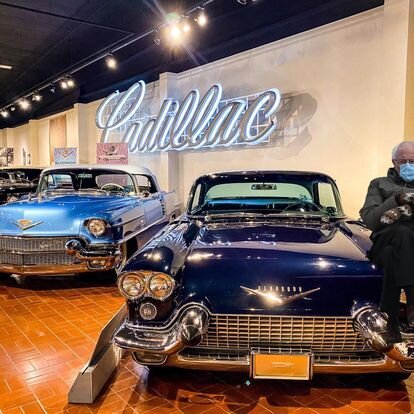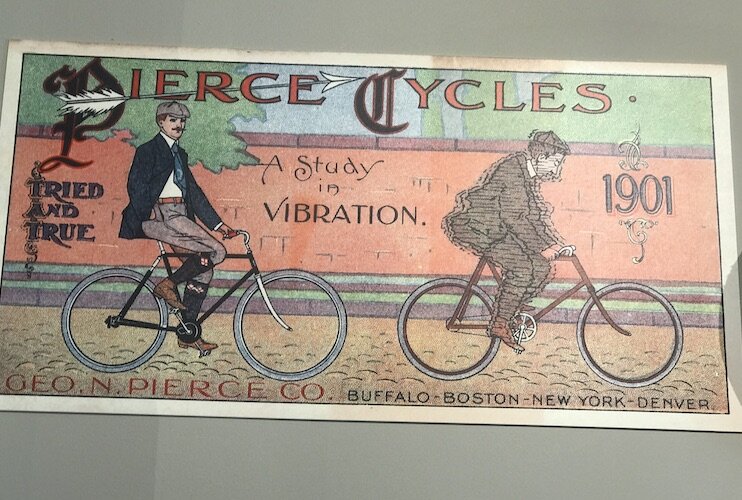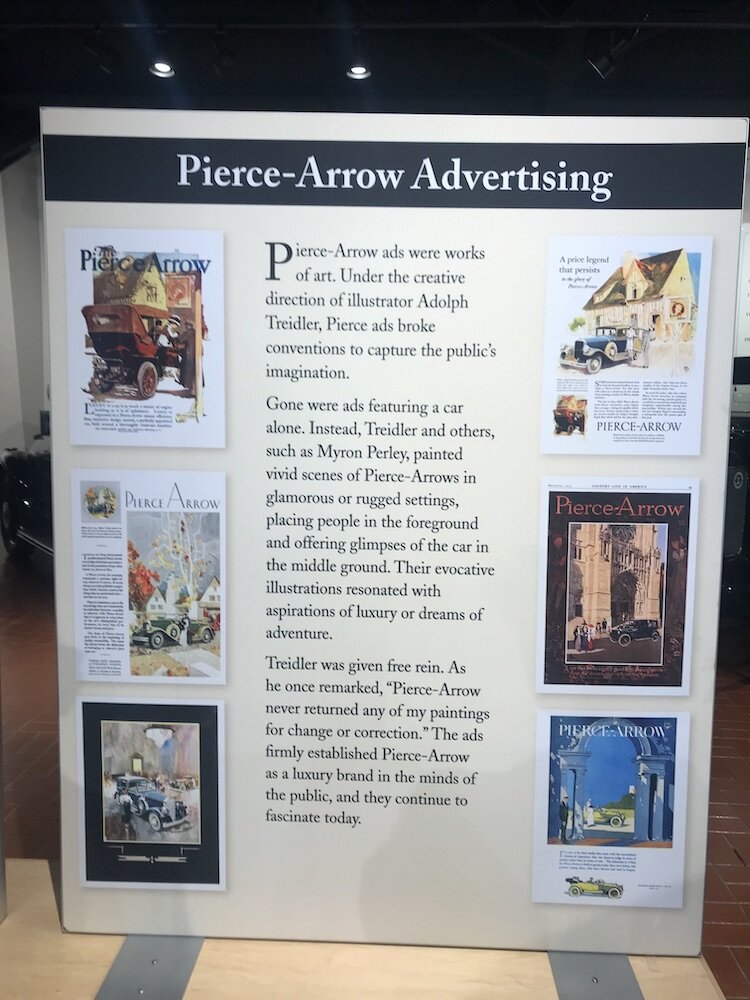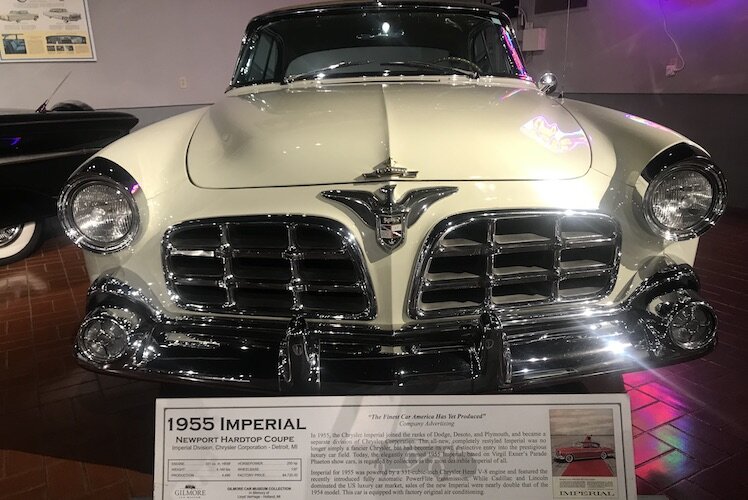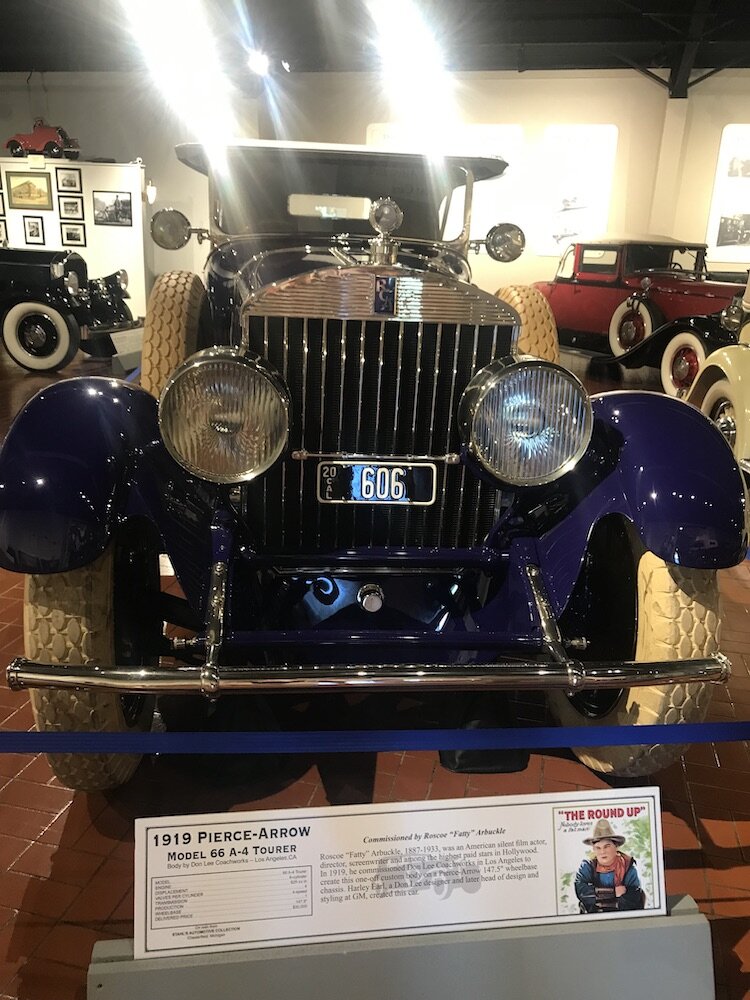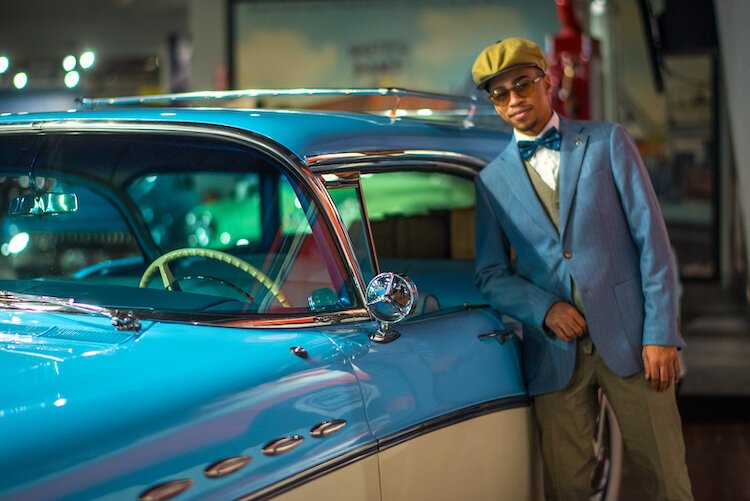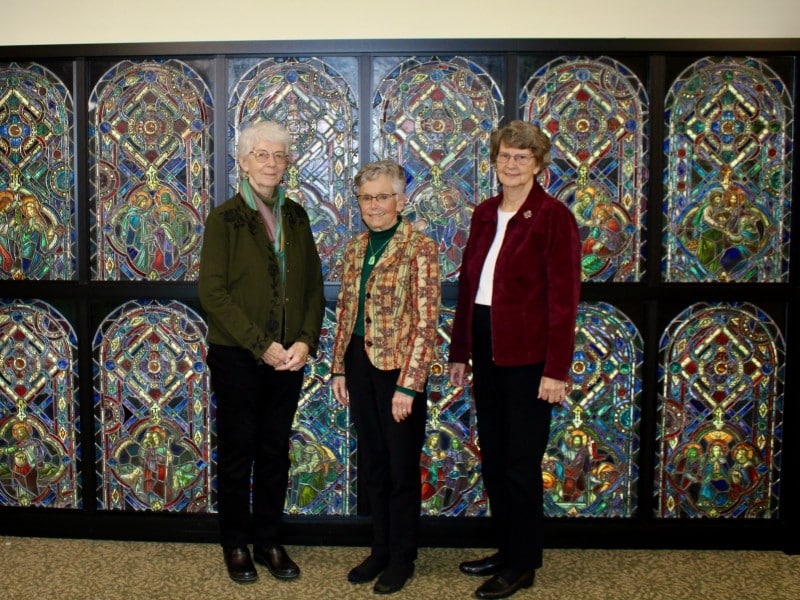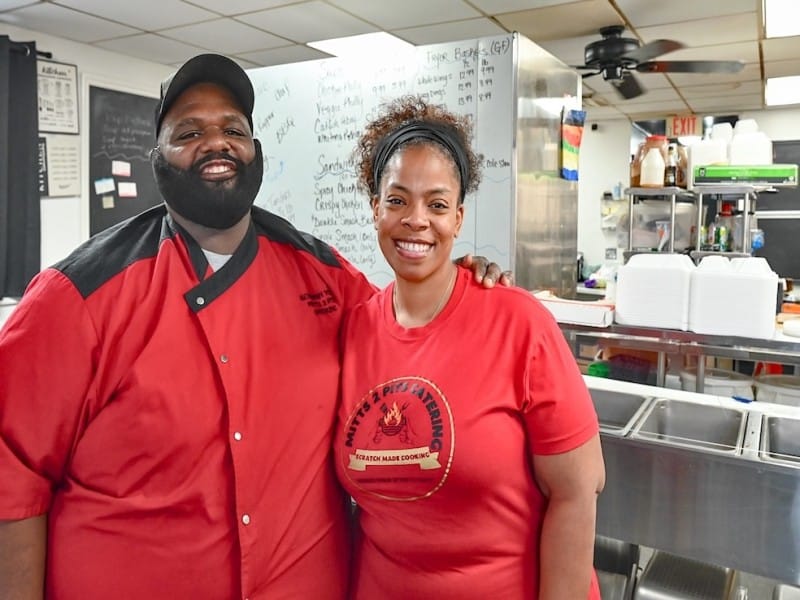Day Tripper: The Gilmore Car Museum is a jaunty trip down memory lane — car person or not
Whether you come from Kalamazoo or Battle Creek, the Gilmore Car Museum delivers on a scenic, country drive and a rewarding destination. The 90-acre campus features over 400 pristine, well-cared-for automobiles, affordable diner fare, and to top off the visit, a choice of ice creams — custard or Plainwell.
HICKORY CORNERS, MI — Shortly before Labor Day, my dad was rustling through some old papers when out slipped an unredeemed Father’s Day coupon from Yours Truly. “One Day Trip with a meal — your choice.”
When we spoke on the phone, he had already begun his research. “Let’s go to the Gilmore Car Museum,” he said. “And I want to eat at the Blue Moon Diner.”
This suggestion worked for me. The Gilmore’s Pierce Arrow Museum had recently caught my attention for reasons I’ll explain later.
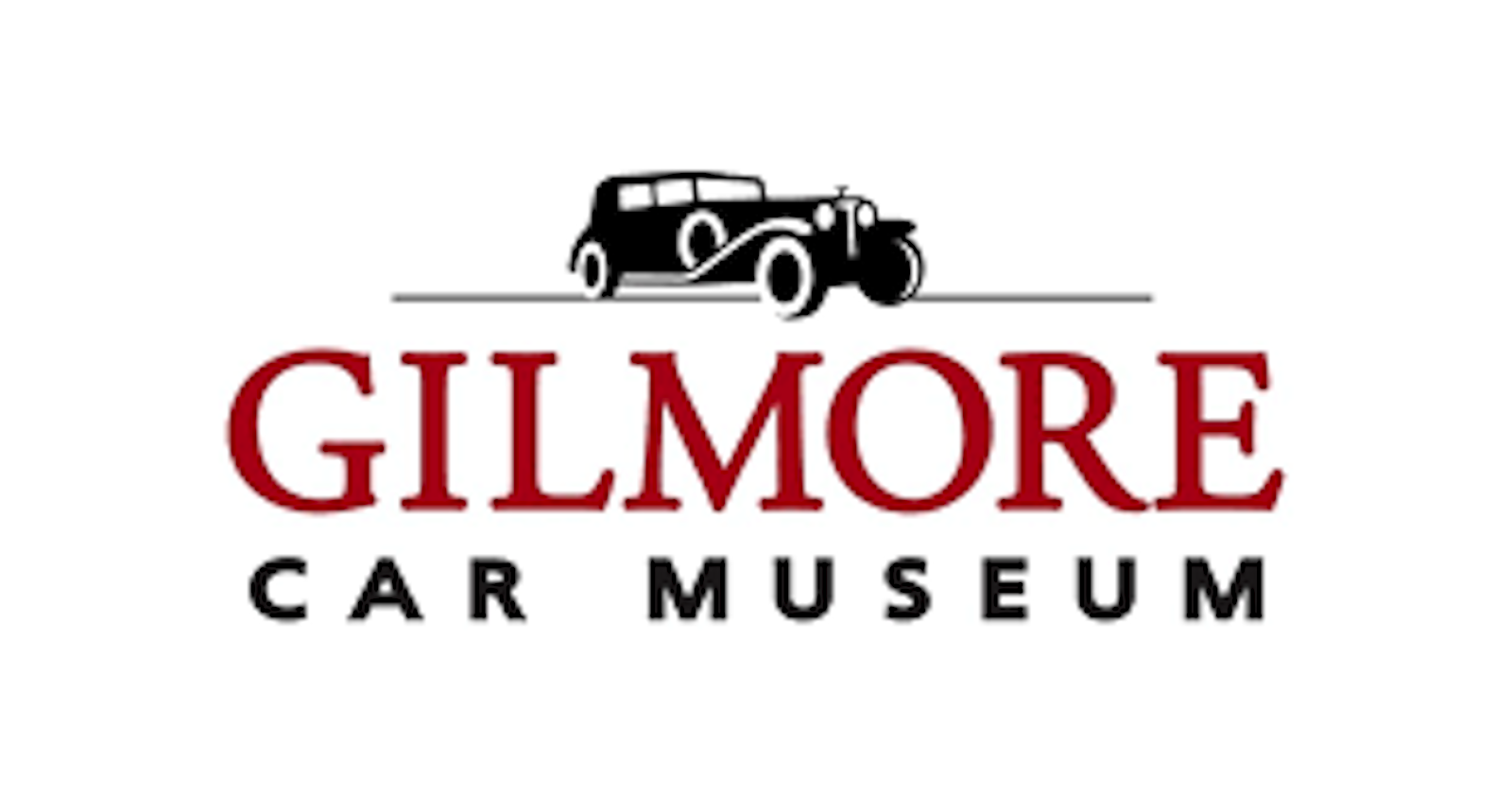
We arranged to meet at Horrocks in Battle Creek. Once there, we got into my recently purchased Honda Clarity, which I have christened Godiva (Diva for short). She is a sparkly red/brown color that a friend calls ‘Merlot.’
The drive out to Gilmore was divine, with a few winding roads, plenty of corn fields, lush greenery, and some catch-up conversation. We also had a chance to admire some of the stately architecture of downtown Battle Creek. It was sunny, not too hot. Pre-September. For the first leg, Diva, a plug-in hybrid, purred on electricity, then she seamlessly transitioned into hybrid mode. As we drove along, I was enjoying the dappled sun, my dad’s company, and Apple CarPlay.
A little museum background
The Gilmore name is a familiar one in Kalamazoo. The Gilmore Brothers Department Store, a longtime fixture on the downtown mall, closed in 1999 and was located where the City Centre now is. The brothers, James Jr., Donald, and Irving, who inherited the store from their father and uncle who founded it in 1881, were passionate hobbyists and philanthropists.
Donald Gilmore, the middle son, was an avid collector of antique automobiles. He opened the Gilmore Car Museum in 1966. It now features over 400 antique automobiles and is the destination site for many automobile collector gatherings, Kalamazoo Symphony Orchestra summer concerts, and other events including weddings.

The Hickory Corners campus has grown to be North America’s largest automobile museum with over 19,000 square feet of museum space. The grounds also feature a 1941 Blue Moon Diner that celebrated its 20th year at the Gilmore Car Museum in August along with a replica 1930s Shell Fuel Station. The diner serves hot dogs, coney dogs, sandwiches, and custard ice cream — my son August had joined us for the tour and we sat outside in the shade where we relished a chocolate cone, fudge sundae, and a malt (all in generous portions) while enjoying the quiet of the grounds.
Ode to Flint
I would not consider myself a ‘car person,’ but I grew up in Flint, which was an automobile town long known as Vehicle City, home to the celebrated 1937 Sit Down Strikes, a GM place where it was not safe to own a foreign-made vehicle. Even Fords were considered suspect.
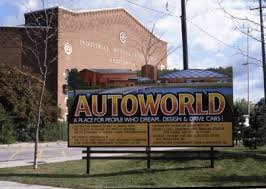
Flint, I learned not long ago, was not called Vehicle City due to automobiles, but because it was once a booming manufacturing town of horse-drawn carriages. The carriage industry dried up, but the name stuck. And the auto industry found a home.
My familiarity with collector’s cars came from Dort Highway Friday night ‘cruises’ in high school where owners drove their souped-up Camaros, Firebirds, and GTOs, and even a few Mustangs and El Caminos, up and down the street, parking and fraternizing at local businesses after dark until they were ushered out by security or police.
Many people in my family, including my mom and uncles, worked ‘on the line’ for GM or related factories, like A.C. Spark Plug. I heard a lot of ‘shop talk’ growing up and once even worked the voting table at union elections where I got a first-hand experience of the plants.
In my family, we weren’t car collectors or aficionados. We represented the blood, sweat, and tears on the manufacturing end. We seldom purchased new cars. And now, sadly, we are Flint expats with an automobile-sized hole in our hearts for our hometown.
The Mustang reaches a milestone
And yet, the automobile as a barometer of history, tastes, trends, transportation, and design intrigues me, especially as it intersects with personal stories.
When we arrived at the museum, we were pleasantly surprised to find it not too crowded for a holiday weekend — mostly hobbyist couples in their mid to late 60s and a few families. Our first foray was to the restrooms, then we hit the Mustang exhibit. You don’t have to know a lot about cars to appreciate the engineering and artistry.
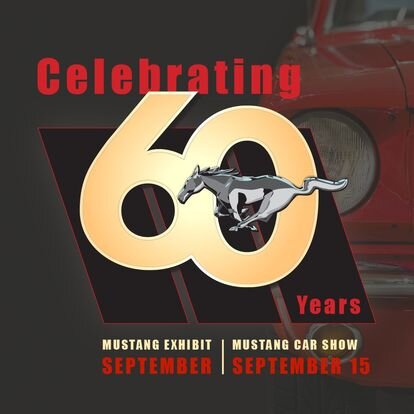
The Mustang is celebrating its 60th anniversary this year. Fun fact: It was named after a fighter plane and not a horse, which ultimately became its emblem. It is also one of few cars to have been produced for over half a century without missing a model year.
As we strolled around the gleaming and brightly colored cars, we played the ‘Which one would you choose’ game. I picked a demure evergreen one and my dad chose a shiny red convertible.
In search of a Bearcat
My dad’s all-time favorite car ever since he was a teenager was a Stutz Bearcat so we were on the hunt which was soon satisfied. First, however, we stopped in front of a 1955 Chrysler Imperial Coupe (“the finest vehicle America has yet produced”), which my dad told me was a treasured car owned by my maternal grandfather Fred.
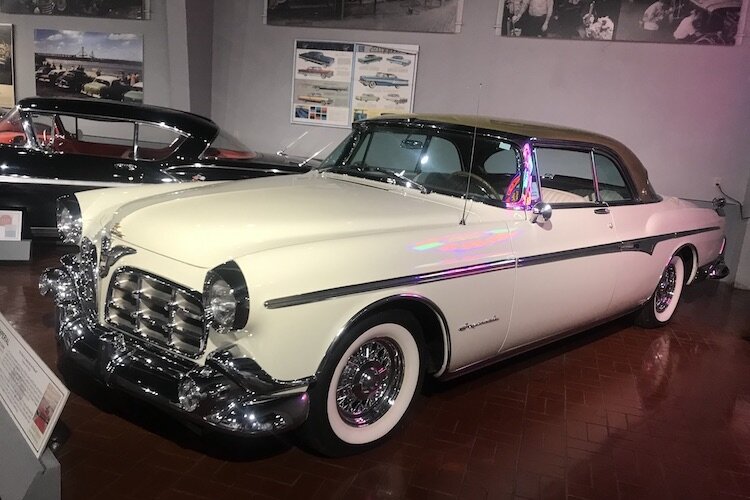
“He was very fond of that car,” my dad said, “and for good reason.” We paused to admire it. I tried to imagine my grandfather, who died before I was born, proudly opening the door to get behind the wheel. It was a car that would elevate one’s posture.
Two display rooms in, we found the coveted 1929 Stutz Bearcat (“The car that made good in a day”), which raced in France’s esteemed LeMans and had the best finish for an American car (second overall). It was tracked at 106 miles per hour.
My dad says he admired the car because “the Stutz was sleek, speedy, and sporty, sure to attract the eyes of fair young maidens.”
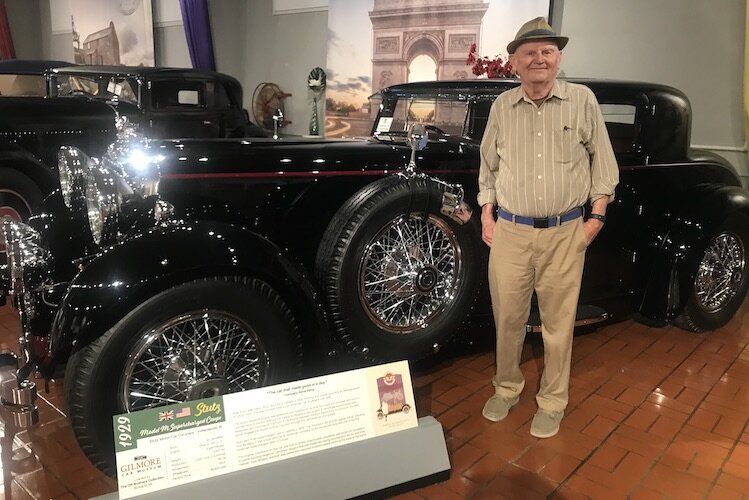
Many of the cars we saw in the main galleries were from around the 1930s, pre-dating my dad’s birth — but he remembered some of them because people were still driving these models when he was a child. Most were taller than the sedans of today (though the height varied widely), some with tires close to two times larger. A fun detail was the various headlights. Some of the cars had as many as eight, almost all round, and a few were as large as dinner plates.
My dad shared a memory of sitting with siblings on the front porch of his childhood home in Saginaw trying to guess the type of car coming down the street by its headlights.
What was his favorite car he ever owned?
His prized 1964 Studebaker, he said. The Studebakers’ very first models ran on battery instead of gas. The company was also the first to introduce a sliding roof station wagon. Unfortunately, my dad’s beautiful lime green car met an untimely end when left on the lower level of a parking ramp during the Great Flood of 1986. I was already in Kalamazoo for college, but my siblings watched her float away on the 6 o’clock news.
The Great Arrow
The Gilmore Car Museum features its main galleries, touring exhibits (like the Mustangs), and then a variety of museums on its campus, including the Cadillac Museum, Lincoln, Muscle Cars, and Horseless Carriage Museum.

I wanted to see the Pierce-Arrows. In Flint, my five siblings and I attended Pierce Elementary School on the city’s east side. The school was named after President Franklin Pierce, but the school body and its sports teams adopted the name Pierce Arrows. However, it wasn’t until I became an adult that I learned the Pierce-Arrow automobile was not at all affiliated with the president. I was curious what these Pierce-Arrows were all about.
Here is what I learned:
The Pierce Arrow Motorcar Company was ahead of its time in terms of humanistic labor practices in the industrial age. According to the company handbook, its factory philosophy included “superior hygienic surroundings” such as natural light and ventilation, spacious cafeterias, and rooms for relaxing as well as recreational activities, including a baseball team.
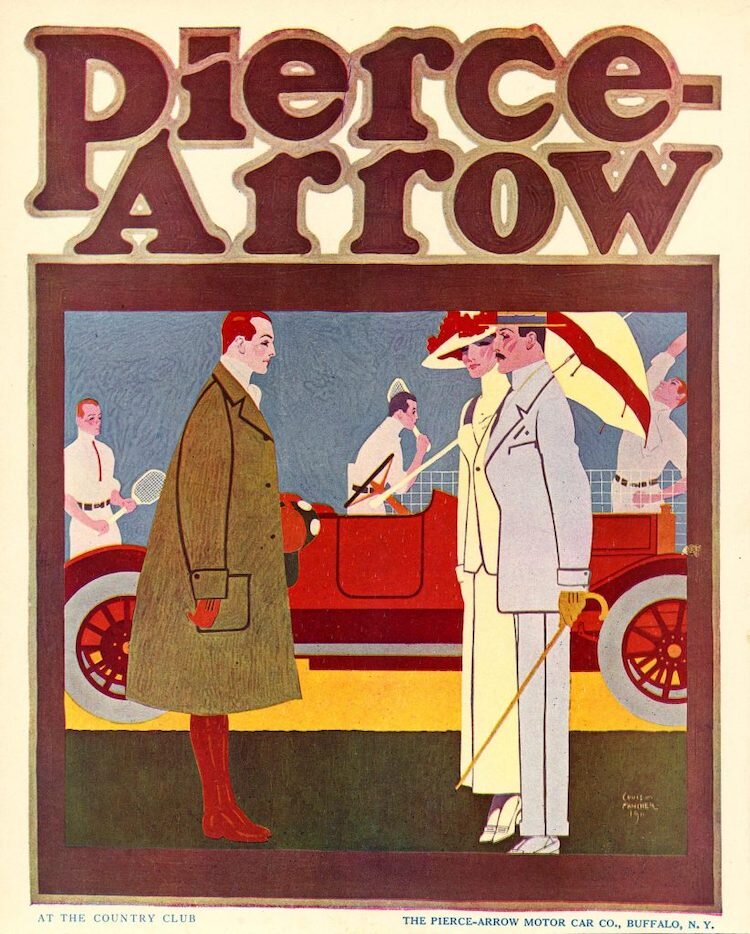
“It is economy as well as humanity to plan factories in which human life is of more account than machinery,” according to the handbook. Imagine that.
My pride in being a Pierce Arrow was expanding. As I soon found out, not only was the company progressive in “fostering a shared sense of purpose between workers and management,” but the automobile itself was considered the ultimate luxury car of the early 1900s in terms of craftsmanship. The Pierce-Arrow was the official White House automobile for six successive administrations — Taft, Wilson, Harding, Coolidge, Hoover, and Franklin Roosevelt.
The first Shah of Iran owned a 1930 customized Pierce-Arrow that included white lacquer and gold-plated trim, bas relief crowns studded with emeralds, and champagne-hued silk embroidered upholstery. The price tag, $30,000, made it up to that point, the “world’s costliest car.”
And finally, silent film star Fatty Arbuckle owned a cobalt blue 1919 Pierce-Arrow (in the exhibit) that he had customized with a 147.5-inch wheelbase (and cream-colored tires).
And guess what company Pierce-Arrow later merged with before its demise? Studebaker, which acquired Pierce-Arrow in 1928, as a much-needed capital investment. The two companies, however, operated independently. Pierce Arrow, unfortunately, did not survive the Great Depression, was sold off in 1933, and shuttered its doors in 1938. The last Studebaker was built in 1966.
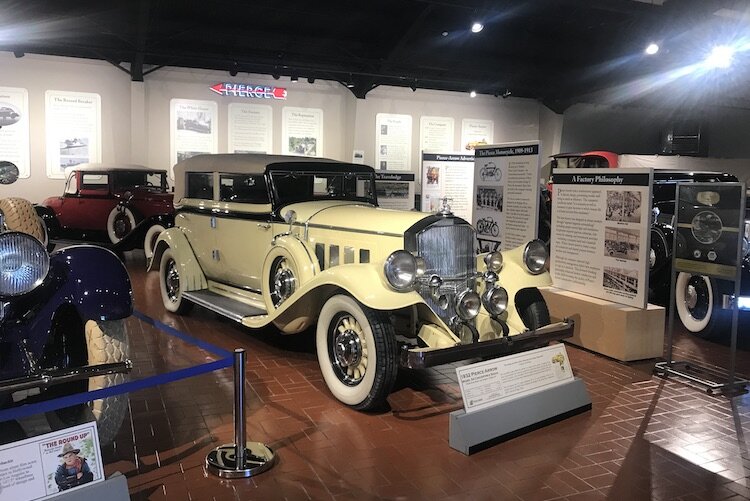
As we left the building, I took with me the true spirit of Pierce-Arrow (craftsmanship and humanity), now merged with my early childhood identity as a Pierce Arrow from Vehicle City.
Why go?
A visit to the Gilmore Car Museum with a relative or friend offers a sweet and delightful trip down memory lane. It certainly did for us. Also, it inspired me to reflect on my lifetime list of owned cars (not counting the ones my family owned when I was growing up). I had a relationship with each one of them — and many stories and adventures, as well, from my first car, a bright orange AMC Gremlin (the “Magic Pumpkin’) to my previous Toyota Prius (Pippi), now passed on to my daughter.
Like my dad, I have never owned a brand-new car. But I have had an affinity with each car I’ve driven, a sometimes primal intuitive connection. My post-college blue Ford Escort wagon refused to start the evening before my wedding, but I wasn’t worried. I knew she just needed a time-out and she would return to life the next day. She was just a little introverted — like me. And she did revive as predicted as we drove off after the reception having wrestled the keys from my husband’s best man. Thank you, Cousin Tommy, for that memory!
“Some men [and women] take care of a car,” wrote Evan Esar, an American humorist. “Others treat it like one of the family.”
I would fall into the latter category, but I appreciate the grandeur and history of a well-cared-for and preserved car. Maybe I am a car person, after all.
If you plan a visit to the Gilmore Car Museum with or without a loved one, you, too, will likely recall, cherish — and make memories.
Editor’s Note: Vintage car rides weren’t available on the day we visited, but if you plan accordingly, you can get a car ride or even schedule a lesson on a Ford Model T and take it yourself for a three-mile drive.
To learn more about hours and exhibits, please visit the website.

